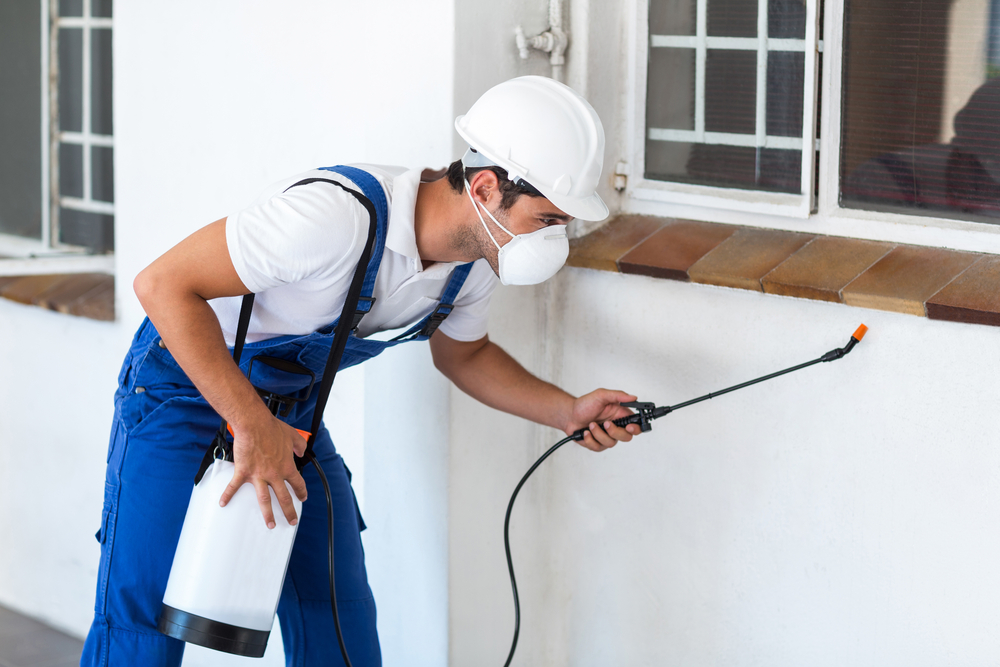Pests, such as insects, rodents, and other organisms, can be detrimental to humans, plants, and animals. They can damage crops, threaten human health, and cause damage to property. In order to manage and prevent these negative consequences, pest control measures must be implemented. This article will discuss the benefits of pest control, the main types of pests that need to be managed, and the different methods of pest control available.
Pest Control Benefits
Effective pest control is essential for a number of reasons. Firstly, it helps to maintain a healthy environment by reducing the spread of diseases. Many pests are carriers of harmful bacteria, viruses, and other pathogens that can cause serious illnesses in humans and animals. By controlling their numbers, the risk of disease transmission is minimized.
Secondly, pest control aids in protecting crops and food supplies. Pests are known to cause significant damage to agricultural crops, which can lead to food shortages and increased food prices. Effective pest control measures can help to prevent this by reducing the impact of pests on crop yields.
Furthermore, pest control helps to protect property from damage. Pests such as termites and rodents can cause significant structural damage to buildings if left unchecked. By implementing pest control measures, this damage can be prevented, saving property owners from costly repairs.
Overall, the benefits of pest control are numerous, and it plays a vital role in ensuring the health and wellbeing of humans, animals, and the environment.
Main Types of Pests
There are a wide variety of pests that can cause problems for humans, plants, and animals. Some of the main types of pests include:
- Insects: Insects such as ants, cockroaches, and mosquitoes can be found in various environments and can cause numerous problems. They can spread diseases, contaminate food, and cause structural damage to buildings.
- Rodents: Rats and mice are common pests that can cause significant damage to property and food supplies. They can also spread diseases through their droppings and urine.
- Birds: Some bird species, such as pigeons and gulls, can be considered pests due to their potential to spread diseases and damage property.
- Termites: Termites are wood-eating insects that can cause extensive structural damage to buildings and other wooden structures.
- Nuisance Wildlife: Animals such as raccoons, squirrels, and skunks can cause damage to property and become a nuisance for homeowners.
- Agricultural Pests: Pests that specifically target crops and other agricultural resources include aphids, caterpillars, and various beetles.
Types of Pest Control
There are several different methods of pest control available, each with its own advantages and disadvantages. Some of the most common methods include:
- Biological Control: This method involves the use of natural predators, parasites, or pathogens to control pest populations. For example, introducing ladybugs may help to control aphid populations in a garden. This method is typically environmentally friendly and can be highly targeted.
- Chemical Control: Chemical control involves the use of pesticides to kill or repel pests. This method can be highly effective, but it may also have negative environmental impacts and can be harmful to non-target species if not used correctly.
- Mechanical Control: Mechanical control methods involve the use of physical barriers or traps to prevent pests from accessing certain areas or to catch and remove them. Examples include sticky traps for insects, mousetraps for rodents, and netting to keep birds away from crops.
- Cultural Control: This method involves altering the environment to make it less suitable for pests to thrive. For example, proper sanitation and waste management can help to reduce the number of pests in an area, while crop rotation can help to prevent the buildup of agricultural pests.
- Integrated Pest Management (IPM): IPM is a comprehensive approach to pest control that combines multiple methods to effectively manage pest populations while minimizing the use of harmful chemicals and reducing the impact on the environment. IPM strategies may include biological, cultural, mechanical, and chemical control methods, as well as regular monitoring and assessment of pest populations.
- Electronic Pest Control: This method uses devices that emit ultrasonic or electromagnetic waves to deter pests from entering a specific area. These devices are typically used for rodent and insect control and can provide a non-toxic, chemical-free solution for homeowners.
- Natural Pest Control: Natural pest control involves the use of non-toxic, eco-friendly products and methods to control pests. This may include the use of essential oils, diatomaceous earth, or other natural substances that are safe for humans and pets but effective at repelling or killing pests.
Pest control is an essential aspect of maintaining a healthy and safe environment, as well as protecting property and agricultural resources. With a wide variety of pests causing various problems, it is important to utilize effective and environmentally responsible pest control methods to manage and prevent their negative impacts. By understanding the main types of pests and the different pest control methods available, individuals and professionals can make informed decisions on how to best manage pest populations and protect the health and wellbeing of humans, animals, and the environment.


